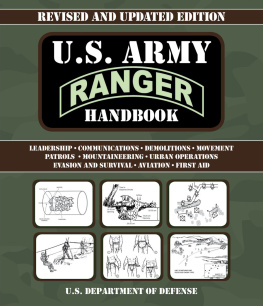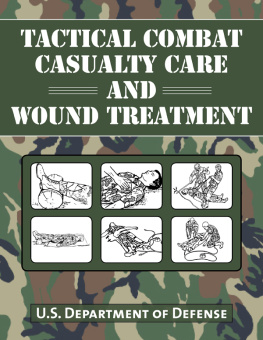Code of Conduct
FOR MEMBERS OF THE ARMED FORCES OF THE UNITED STATES
1.I am an American, fighting in the forces which guard my country and our way of life. I am prepared to give my life in their defense.
2.I will never surrender of my own free will. If in command, I will never surrender the members of my command while they still have means to resist.
3.If I am captured, I will continue to resist by all means available. I will make every effort to escape and aid others to escape. I will accept neither parole nor special favors from the enemy.
4.If I become a prisoner of war, I will keep faith with my fellow prisoners. I will give no information or take part in any action which might be harmful to my comrades. If I am senior, I will take command. If not, I will obey the lawful order of those appointed over me and will back them up in every way.
5.When questioned, should I become a prisoner of war, I am required to give name, rank, service number, and date of birth. I will evade answering further questions to the utmost of my ability. I will make no oral or written statements disloyal to my country and its allies or harmful to their cause.
6.I will never forget that I am an American, fighting for freedom, responsible for my actions, and dedicated to the principles which made my country free. I will trust in my God and in the United States of America.
FOR THE GOVERNMENT OF THE UNITED STATES
The US government also has responsibilities under the code. The Nation has pledged itself:
To keep faith with you and stand by you as you fight for its defense;
To care for your family and dependents; and should you be captured,
To use every practical means to contact, support, and gain release for you and all other prisoners of war.
Copyright 2015 by Stackpole Books
First edition published 1956. Fourteenth edition 2015.
Published by
STACKPOLE BOOKS
5067 Ritter Road
Mechanicsburg, PA 17055
www.stackpolebooks.com
All rights reserved, including the right to reproduce this book or portions thereof in any form or by any means, electronic or mechanical, including recording or by any information storage and retrieval system, without permission in writing from the publisher. All inquiries should be addressed to Stackpole Books, 5067 Ritter Road, Mechanicsburg, PA 17055.
Printed in the United States of America
10 9 8 7 6 5 4 3 2 1
FOURTEENTH EDITION
This book is not an official publication of the Department of Defense or Department of the Army, nor does its publication in any way imply its endorsement by these agencies. The views presented are those of the author and do not necessarily represent the views of the Department of Defense or its Components.
Cover design by Tessa J. Sweigert
Cover photo by Gary Stevens
Library of Congress Cataloging-in-Publication Data
Kirkham, Jeff.
Combat leaders field guide / MSG Jeff Kirkham, US Army Special Forces. 14th edition.
pages cm
Includes bibliographical references and index.
ISBN 978-0-8117-1448-8
eISBN 978-0-8117-6165-9
1. United States. ArmyField serviceHandbooks, manuals, etc. I. Title.
UD443.J8 2015
355.4dc23
2014040826
Contents
Preface
This guide is designed to assist leaders or prospective leaders of combat infantry units or other groups that, in an emergency, must fight as infantry. The content is tactical and logistical, with administrative matter mostly omitted. When in the field, especially under stress of combat or simulated combat, the combat leader cannot instantly recall everything he has been taught. Rapid changes in the situation may cause him to assume a position for which he has not yet been trained. He will then appreciate some brief reference material to guide him. He cannot carry a 5-foot shelf of field manuals and, unlike the staff officer or higher commander, he does not have ready access to organizational files or a library when in the field. What he needs he must carry in his pocket, condensed yet in a form approximating at-a-glance capability. This field guide has been compiled from current doctrine and field manuals with those requirements in mind. Much of the reference material is in fact a comprehensive checklist to ensure that important considerations of troop leading are not overlooked.
As with the prior edition, the material in this edition is in two parts: unit combat operations and soldier combat skills. The material in focuses on critical individual soldier skills necessary for battlefield effectiveness and survival.
This guide also includes the considerations applicable to how US Army doctrine addresses the range of full-spectrum operations across the range of conflict. When conducting full-spectrum operations, commanders combine and sequence offensive, defensive, stability, and support operations to accomplish the mission.
Acknowledgments
Hidden between the lines of any good piece of work is the idea and source for that work. Combat Leaders Field Guide was originally published as the Junior Leaders Field Notebook in 1956; since that time, it has gone through twelve revisions, and this one will be the thirteenth, making it the fourteenth edition.
This book is a compilation of lessons learned from many great soldiers operating on a myriad of battlefields across the entire spectrum of military operations. It is these soldiers who deserve the credit for this book. You know who you are. Thank you for watching my back for the last two decades.
Military doctrine is evolutionary. It is rooted in scholastic research, tested in training, and then formalized by professional soldiers during real-world experiences. The complexities of modern infantry operations are truly staggering. Never in history have so many skill sets been required by so small a group as the modern infantry. Infantrymen are no longer expected to just understand ground tactics. Now they must also operate high-tech equipment, advanced weaponry, and space-age communications while combating unconventional and conventional forces in asymmetric combat. Instantaneous life-and-death decisions must be made in the blink of an eye, only to be later judged by others in air-conditioned rooms with 20/20 hindsight.
However, one thing hasnt changedthe single most important aspect of surviving in combat is constant improvement through realistic training. Train as you fight.
I would like to thank my comrades in arms, both in and out of uniform, whom I have had the pleasure of working with for the past twenty-eight years. Since 9/11, our way of thinking about military tactics has evolved by leaps and bounds, leaving us with a simple, common-sense methodology that will serve us well in future conflicts.
It is my sincere hope that some of the lessons learned in blood and incorporated into this book will help one of my future comrades.
Jeff Kirkham
MSG, US Army Special Forces
PART ONE
Unit Combat Operations
The Battlefield
ARMY DOCTRINE
Small-unit leaders must understand the concepts and fundamentals of Army doctrine to effectively lead in combat. The US Armys current operational doctrine holds warfighting as the Armys primary mission. It recognizes the ability of Army forces to dominate land warfare across the full spectrum of conflict, from large-scale operations to military operations other than war (MOOTW). Full-spectrum operations include offensive, defensive, stability, and support operations. Army commanders may combine these different types either simultaneously or sequentially to accomplish the missions of war. For each mission, the joint force commander and Army component commander determine the emphasis Army forces place on each type of operation. Offensive and defensive operations normally dominate.









